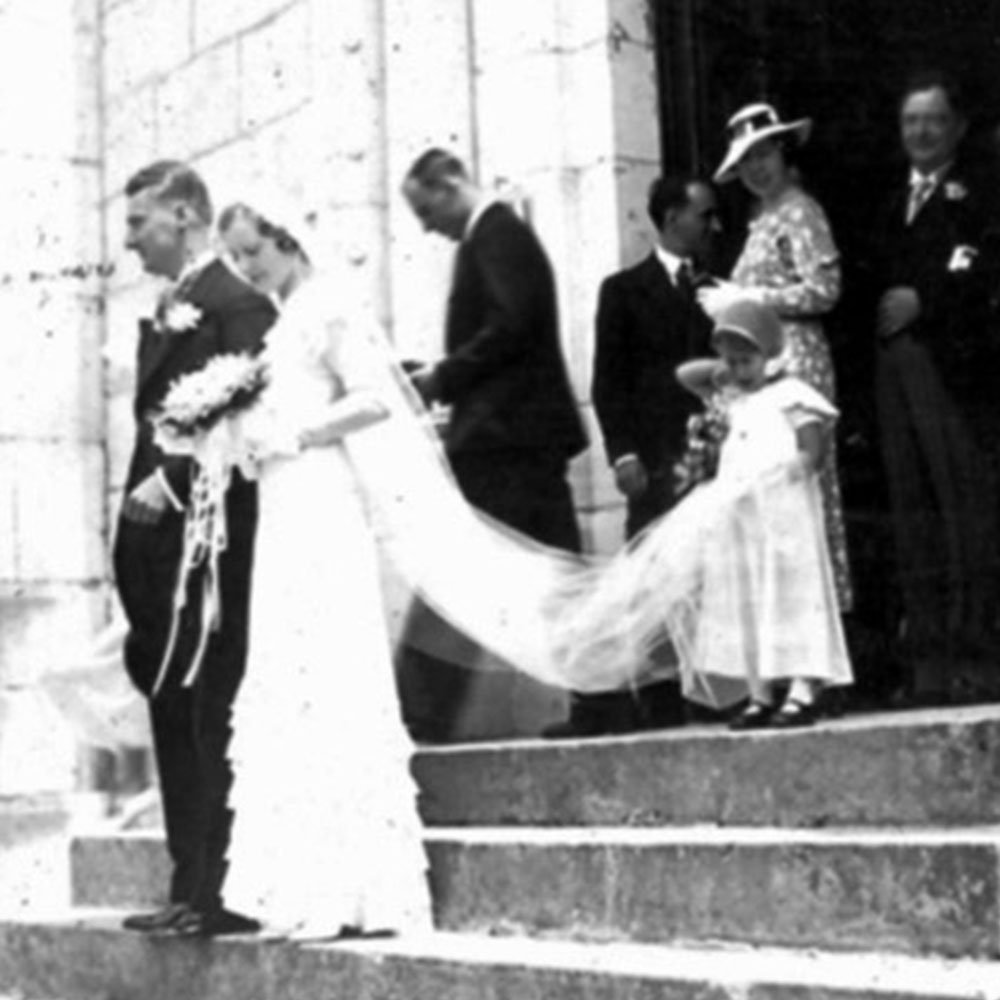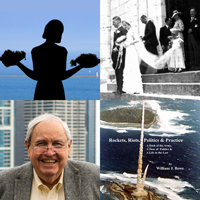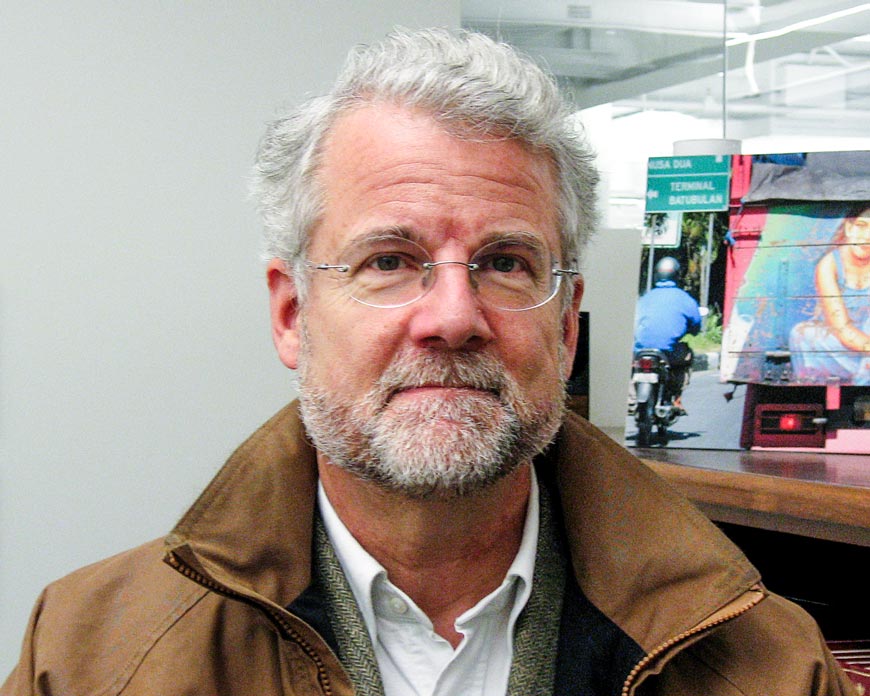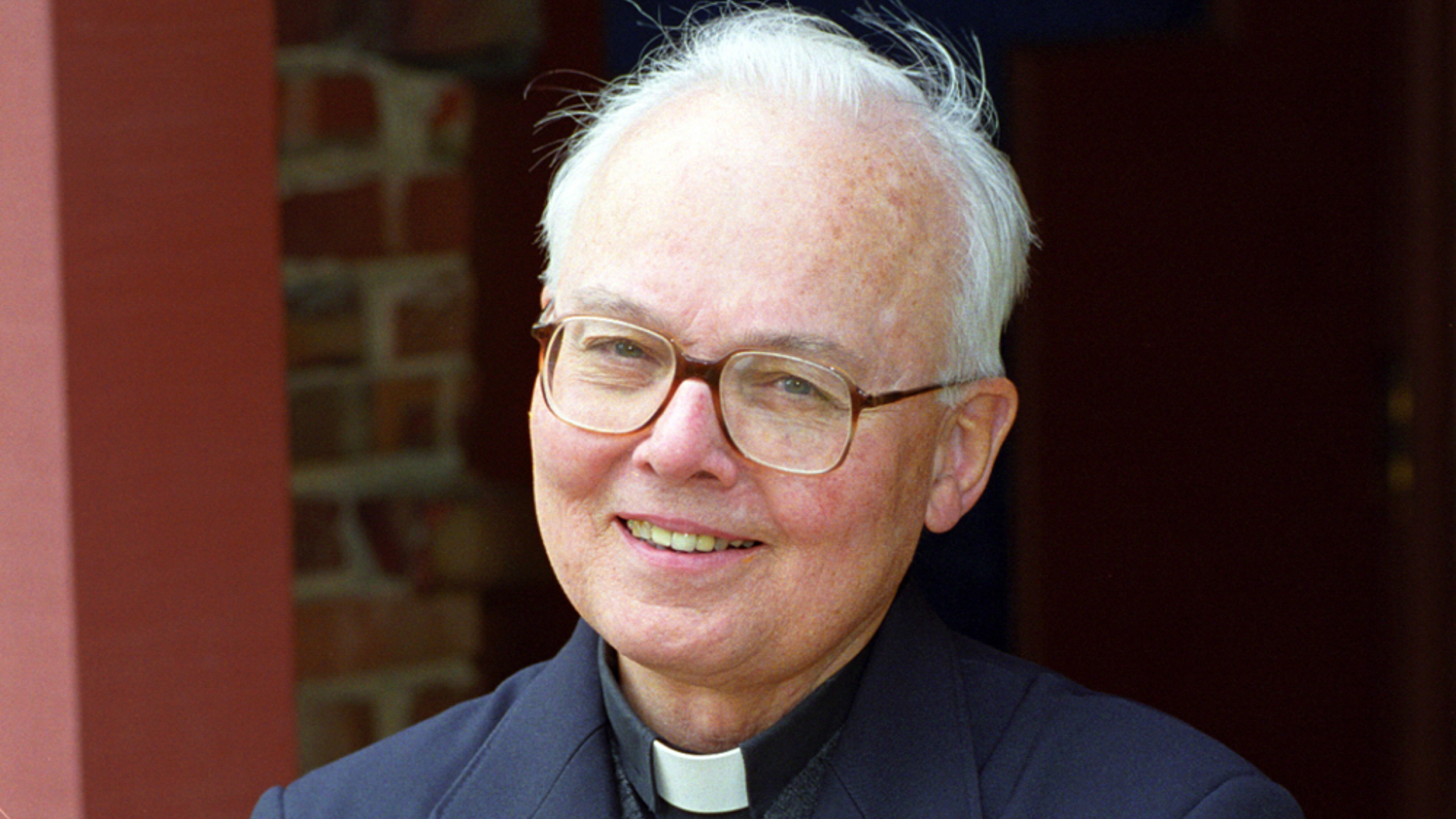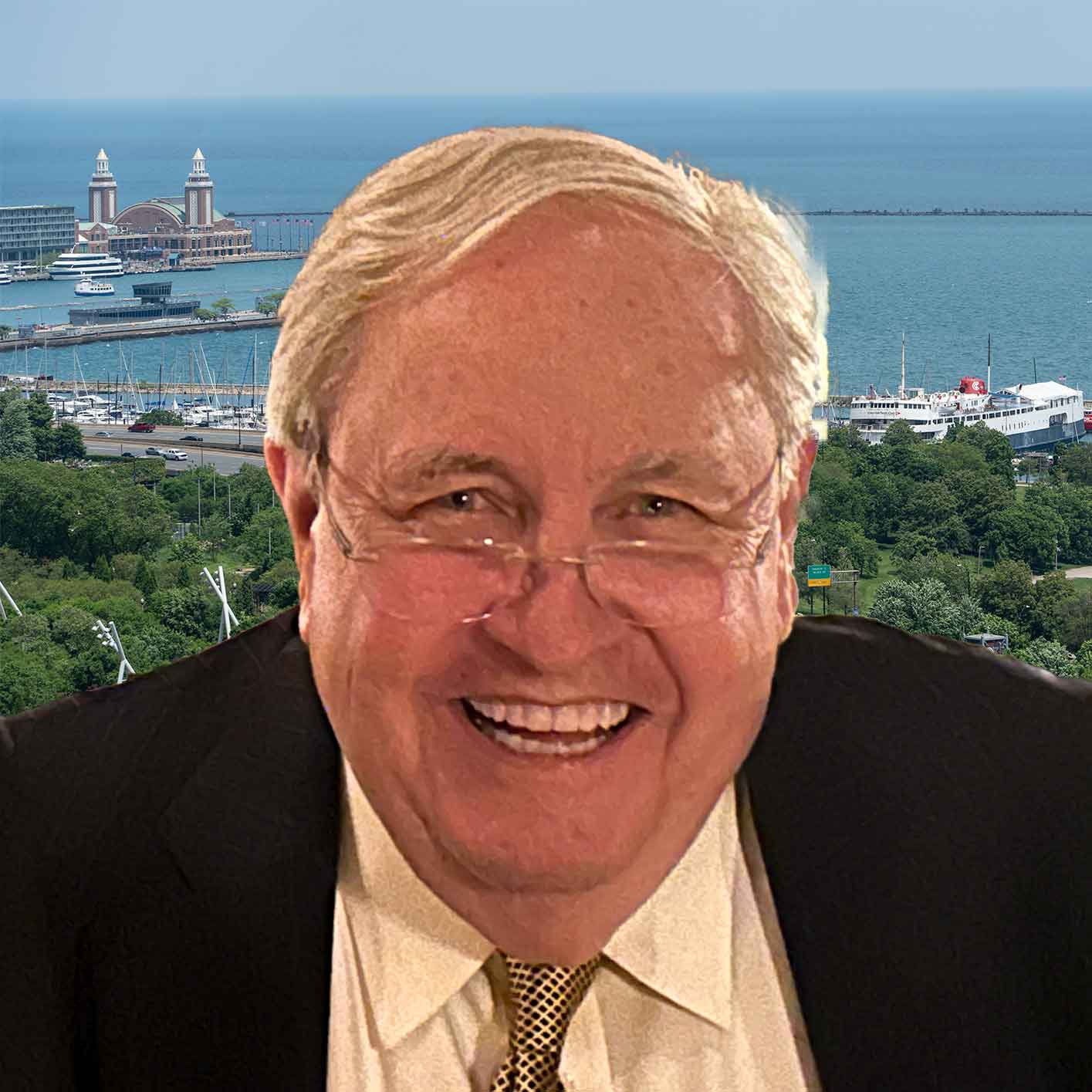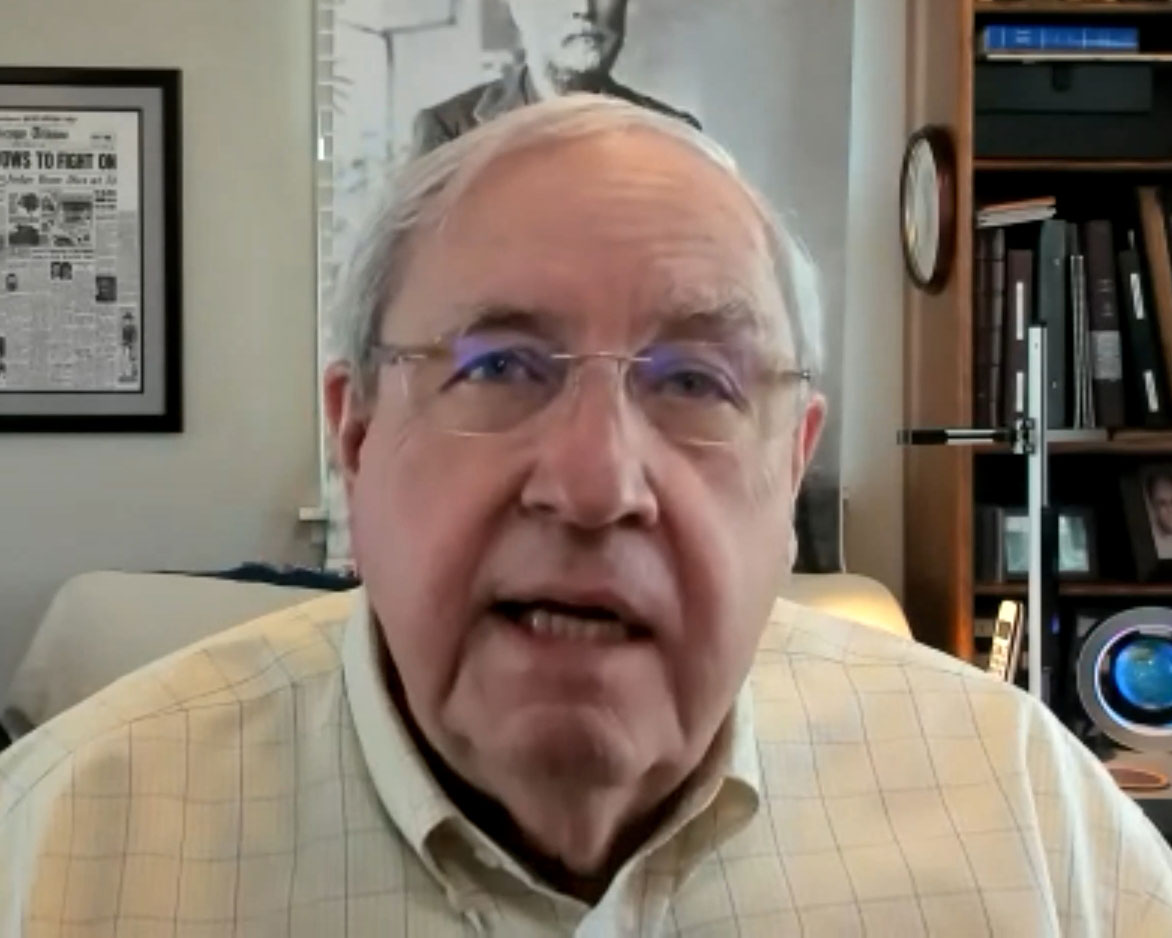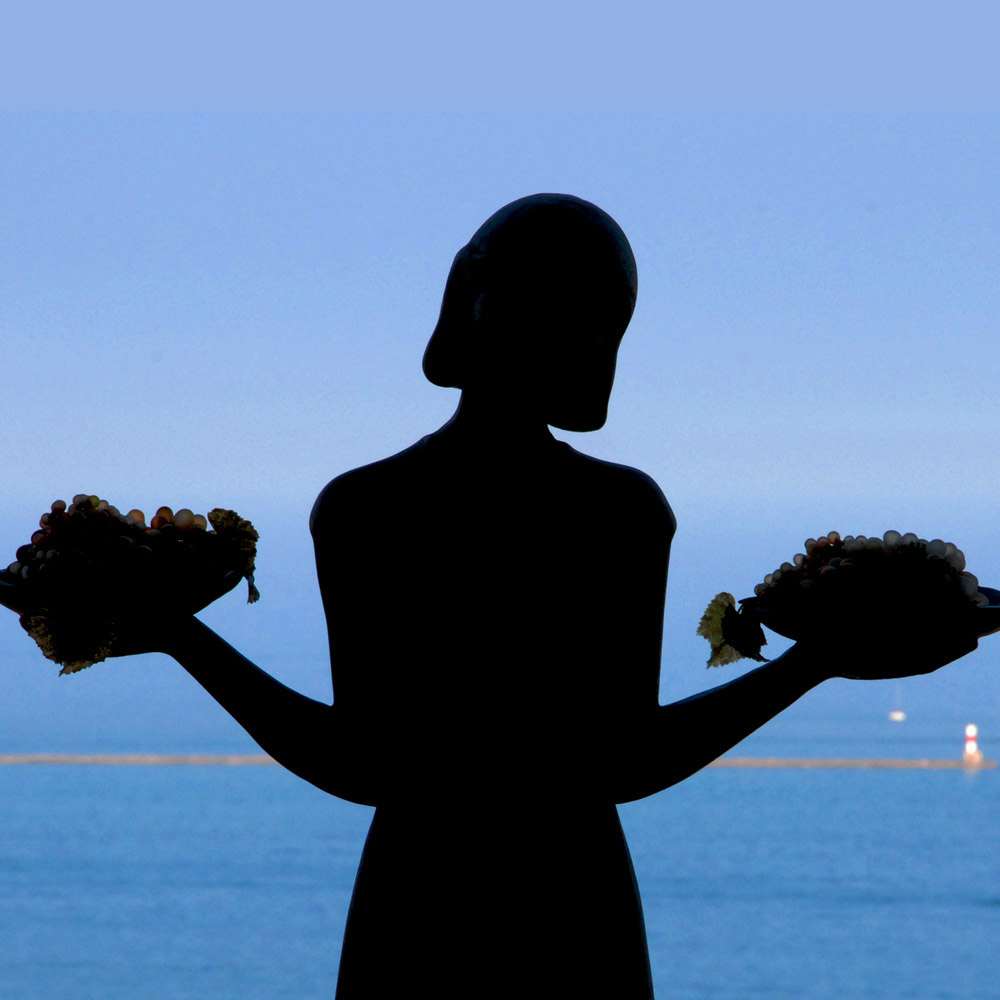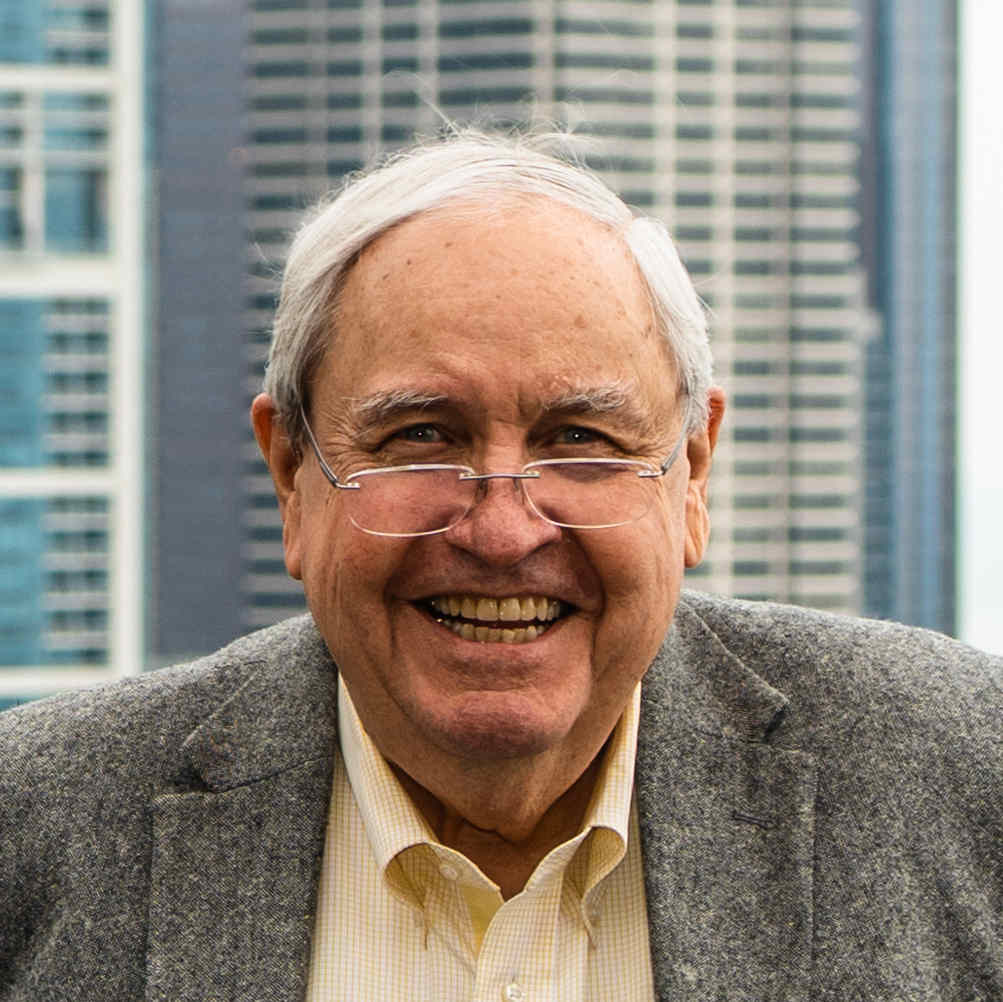Editor’s Note: In this clip, Tony Bowe asks about my mother’s childhood. My grandfather, Richard Gwinn, Jr. married his first wife, Mary Agnes Roche in 1900. In March 1901, she died giving birth to my mother. Relying on her 1970 family history and genealogy, The Families, and stories she told my as I grew up, I explain to Tony how my mother came to be largely raised by her father’s mother, Elizabeth Agnes Burns Gwinn. To my mother, this was always her “Mama,” and she lived with her paternal grandmother almost all the time from her birth in 1901, until her grandmother’s death in1922, during my mother’s third year at Trinity College.
When I reviewed my mother’s account of her childhood in The Families after I talked to Tony, I was reminded of some of the details of my mother’s early years I had forgotten, and of others that I had mixed up. She wrote there that when she was born in Baltimore, her grandmother, widowed from Richard Gwinn, Sr. in 1897, was in Georgia recuperating from Scarlet Fever. That produced the question of who would immediately care for her. In that era, in that situation, no one in her family, including her father, seems to have thought he alone was the best choice in caring for the motherless infant. Richard Gwinn, Jr.’s good friend, and co-founder of The Calvert Bank with James Preston was Will Page. His wife immediately stepped into the temporary breach.
When Elizabeth Burns Gwinn returned from Georgia, she and my mother headed to her rented quarters in a house owned by a Mrs. Okie at 1225 Connecticut Avenue in Washington, DC.
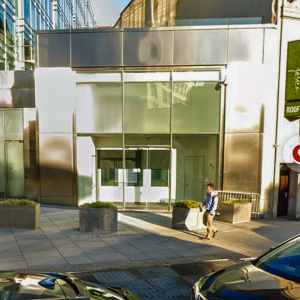
1225 Connecticut Ave.
My mother reports that several of the other tenants were Senators, including James Hamilton Lewis and his wife. He was a prominent Illinois politician, elected Senator from Illinois in 1912, defeated in a race for Governor of Illinois in 1920, and reelected to the Senate from Illinois in 1930 and 1936. Today the house is gone, and the address the site of an innocuous office building entrance.
The first school my mother attended as a child was at 1740 Massachusetts Avenue, NW, close to Dupont Circle. This was the Force School, named for a former mayor of the District of Columbia, Peter Force. The website of The White House Historical Association describes the school this way:
” After the Civil War, the nation’s capital became a magnet for foreign diplomats and people who had made fortunes in the North and West. They flocked to the city to influence policy and to seek support from and influence with the United States.
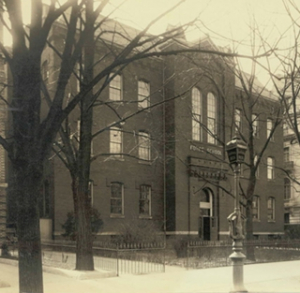
The Force School
Among the schools frequented by their children was the Force School, located at 1740 Massachusetts Avenue, NW, close to Dupont Circle and the hub of society and diplomatic life.” Four years older than my mother, Quentin Roosevelt, President Theodore Roosevelt’s youngest son, attended Force when his father came to The White House.
My mother spent most of her grammar school years attending the Visitation Convent School, at 1225 Connecticut Avenue, a few blocks down Connecticut Avenue from her home. In 1923, two years after she graduated from Trinity College in Washington, the Visitation School was replaced by the newly built and massive Mayflower Hotel.
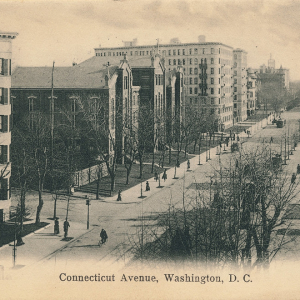
1907 Visitation Convent School

2022 Mayflower Hotel
Before entering the Force School in the second grade, my mother had been taught to read by her father’s brother, whom I remember as my Uncle Tom. Thomas Ross Gwinn (1883-1962) worked as a civil servant in the War Department all his life, and I recall visiting him at his apartment at 1920 Eye Street, NW in the early 1950s.
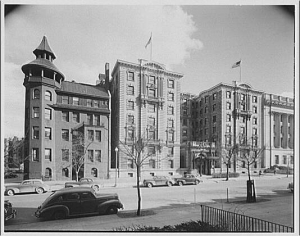
1920 Rochambeau Apartments
Later my mother moved to the Rochambeau Apartments, 815 Connecticut Avenue, NW. This was next to the original Army and Navy Club building, before its move a block north across from Farragut Square. Living with her and her grandmother at the Rochambeau was her grandmother’s daughter, Mary Cornelia Gwinn, who also had a civil service job. In her case, she was keeping track of the records of Confederate veterans at the War Department. In 1908, Mary Gwinn would marry Will Page’s brother George, in Deal, New Jersey.
In 1910, my mother writes that she climbed to the roof of the Rochambeau building and saw President William Howard Taft unveil and dedicate the statue of Friedrich Wilhelm von Steuben, in Lafayette Park. (Baron von Steuben was a German soldier who had joined the Continental Army and trained its troops to fight the British in the Revolutionary War.)
Connecticut Avenue at the time was lined with chestnut trees when my mother walked the short distance north when she transferred to the Convent of the Visitation school. There she reported that she learned how to count to one hundred in French, and gave up her earlier idea of becoming a nun.
Late in life, when my mother sat down to write about her “Mama” in The Families, this is what she said:
“I had always considered that I owned Mama . She belonged to me though grandmother and grandchild were an undemonstrative pair. Mary [Cornelia Gwinn], Bessie [Elizabeth Gwinn] and Tom were too grown up to matter . Richard, my father, was some distance away, but Mama was always there, representing everybody. My two parents were in one, and I was always her peer. She never talked down to me or was over-attentive . She assumed I’d follow anything reasonable if it was explained. She set up early standards of behavior for little girls, ‘This is right and you do it. That is wrong, and you don’t do it.’ And, ‘Observe and do your own thinking. Adults are not always right. but you don’t have to tell them.’ If I was in doubt about an invitation or just didn’t want to go, it was a great comfort just to say, ‘My grandmother won ‘t let me.’ But it was from Mary I heard, ‘Stand up straight. Keep neat and clean. Speak clearly, and don’t attract attention to yourself.’”
While my mother was schooled in Washington, DC until her high school years, between May and September she and her grandmother would always leave the Capital and leave the hot and humid Washington summer to others. There was first an early trial run my mother’s first two summers when she stayed at a hotel in Asbury Park, New Jersey with her grandmother and her aunt, Bessie Gwinn. Thanks to financial help from her father and other aunt, Mary Cornelia Gwinn, a 12-bedroom rooming house at 58 Sydney Avenue.
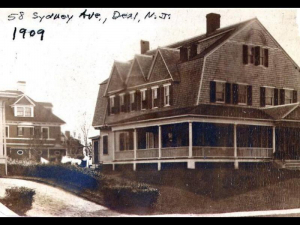 58 Sydney Avenue, Deal, NJ
58 Sydney Avenue, Deal, NJ
Her is my mother’s account on how this business supported the family, and was furnished and managed by her grandmother:
“Mama liked to go to Sloan ‘ s for their Washington auctions and much of the furniture came from there. She had no great amount of money and Mary and Richard [Gwinn] helped out , but she followed the custom of all impoverished southern families after the war and welcomed boarders. So various couples and families from New York stayed with us summer after summer. There were never too many and it was all very manageable and friendly. Three in help made this possible: William Johnson, waiter , gardener and handyman; Rachael Henderson, a great cook, and a maid changing each year. The other two stayed twenty years. As Deal had no stores, Mama and I used to go to market taking the trolley to Asbury. Otherwise I was pretty free to suit myself. She never permitted me to be used for household jobs or errands, and she encouraged my playing with the many children all around.”
During his bachelor years, my grandfather Richard Gwinn, Jr. would visit his family Deal in the summer. It was there that he had occasion to meet his second wife, Elizabeth Josephine Tack. She had joined her parents, Theodore Edward Tack (1837-1914) and his wife, Mary Cosgrove Tack (1850-1919) in several summer visits from their home in New York City. Richard Gwinn, Jr. and Elizabeth Tack were married in 1907.

